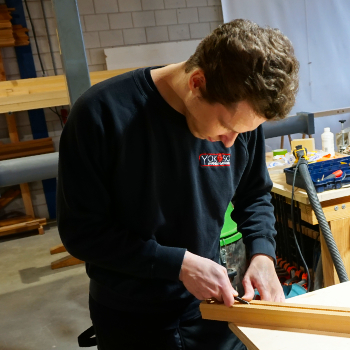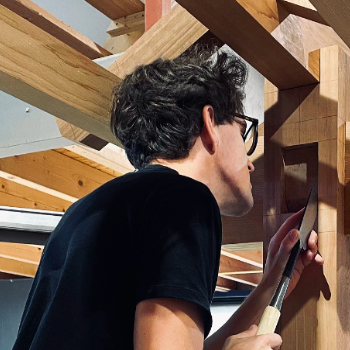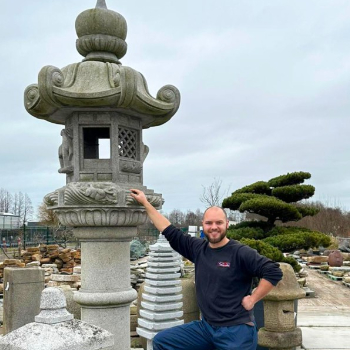Sukiyado – Dutch Specialists in Japanese & Japandi Interior Design and Construction - Traditional Craftsmanship, Natural Materials & Timeless Aesthetics for Homes, Offices & Hospitality Spaces
Sukiyado is a Dutch design and construction company that brings the serene elegance of Japanese and Japandi-style interiors into modern living and working environments. Specializing in both traditional and contemporary Japanese interior design and interior construction, Sukiyado works with individuals and companies to create thoughtful, harmonious spaces that elevate daily life.
Rooted in the spirit of Japanese craftsmanship and adapted to Western lifestyles, Sukiyado offers a rare combination: authentic design inspired by centuries-old traditions, paired with modern precision and practicality. Whether it's a residential interior, wellness space, restaurant, tea room, or office, every Sukiyado project tells a story of balance, beauty, and intentional living.
Craftsmanship Guided by the Daiku – Japan's Master Carpenters. Sukiyado's approach is deeply inspired by the Daiku, the traditional Japanese master carpenters known for building temples, shrines, and wooden houses without the use of nails or metal fasteners. The work of a Daiku is as much about philosophy and spirit as it is about form and function. These craftspeople view construction as a dialogue with materials and nature, and every joint, beam, and panel is treated with reverence. Sukiyado applies this same philosophy through a carefully considered, hands-on workflow:
1. Observation and Consultation
The process begins with attentive listening—to the client's needs, the building's structure, and the atmosphere of the space. A careful study of natural light, circulation, materials, and function ensures a harmonious foundation.2. Concept Development
Designs are developed using traditional Japanese principles such as:- Ma – the space between objects, allowing for openness and rhythm.
- Wabi-sabi – embracing the beauty of imperfection and impermanence.
- Shizen – a natural, unforced design aesthetic.
- Kanso – simplicity and clarity.
3. Material Curation
Natural, high-quality materials such as Japanese cedar, cypress, bamboo, tatami, stone, and washi paper are selected with care. Whenever possible, sustainable and locally sourced materials are used to reduce environmental impact.4. Precision Joinery and Construction
Like the Daiku, Sukiyado values craftsmanship and detail. Traditional joinery methods—wooden joints without visible hardware—are used for structural and decorative elements, blending strength with aesthetic purity.5. Final Styling and Integration
The space is completed with furniture and decorative elements that reflect the chosen style—be it more traditionally Japanese, or Japandi, the popular fusion of Japanese elegance and Scandinavian functionality. Each object serves both a functional and aesthetic purpose, maintaining the clarity of the overall space.The Philosophy of Japanese and Japandi Architecture
At the heart of Sukiyado's work lies a commitment to the core principles of Japanese architecture and spatial design, which prioritize harmony, simplicity, and a deep connection with nature. These philosophies are timeless—and more relevant than ever in today's overstimulated environments.Key Design Principles:
- Simplicity (Kanso): A clean, uncluttered aesthetic that removes excess to highlight what truly matters.- Nature (Shizen): Natural light, materials, and transitions between indoors and outdoors create an ever-changing, living environment.
- Impermanence (Wabi-sabi): The beauty of time-worn surfaces, asymmetry, and humble materials is embraced, not hidden.
- Stillness and Space (Ma): The space between is just as important as the objects themselves, allowing the eye and the spirit to rest.
- Adaptability: Japanese rooms often have sliding partitions or movable furniture, allowing one space to serve many purposes throughout the day.
In Japandi interiors, these principles are combined with Scandinavian influences—lighter wood tones, soft textures, and a greater emphasis on functionality and comfort—creating spaces that feel both peaceful and practical.
Japanese Interior Spaces, Elements, and Furniture
Japanese interiors are defined by their functionality, simplicity, and sensory richness. Sukiyado designs and builds interiors using a palette of traditional spaces, elements, and furnishings—many of which are adapted for contemporary lifestyles.Washitsu (Japanese-style Room) A multi-functional room with:
- Tatami mats as flooring.- Shoji screens (translucent paper and wood) or fusuma (opaque sliding doors) as partitions.
- A tokonoma alcove to display seasonal art, ceramics, or ikebana (flower arrangements).
Genkan (Entryway) The threshold between the outside world and the home:
- Raised flooring to indicate a clean, sacred interior.- Built-in storage for shoes and umbrellas.
- Natural materials like stone, wood, and plaster for grounding energy.
Chashitsu (Tea Room) Designed for traditional tea ceremonies, featuring:
- A compact and intimate layout.- Natural and rustic materials.
- A quiet, contemplative ambiance.
Essential Elements and Furniture:
- Tatami: Traditional straw mats used for flooring. Natural, breathable, and soft underfoot.- Shoji Screens: Sliding screens that allow diffused light to enter while maintaining privacy.
- Fusuma: Heavier sliding doors often decorated with hand-painted designs.
- Tokonoma: A shallow alcove for the display of meaningful art or natural objects.
- Chabudai: Low tables used for dining or tea, often paired with zaisu (legless chairs).
- Zabuton: Floor cushions used for meditation or informal seating.
- Wooden Beams and Joinery: Exposed and detailed to showcase craftsmanship.
- Built-in Niches and Hidden Storage: Reducing clutter and maximizing flow.
- Washi Paper Lamps: Handcrafted lighting that emits a warm, natural glow.
Japandi Adaptations: Sukiyado also integrates elements of the Japandi style, such as:
- Minimalist Scandinavian furniture with Japanese-inspired lines.- Muted, earthy tones paired with natural textures.
- Open shelving and cabinetry made from oak, ash, or bamboo.
- Soft textiles, linen drapes, and cozy wool rugs for warmth and tactility.
Creating Spaces with Meaning
Whether it's a serene residence, a hospitality space infused with cultural ambiance, or a modern office designed for clarity and focus, Sukiyado delivers interiors that invite stillness, beauty, and awareness.Their work is not only a tribute to traditional Japanese craftsmanship but a thoughtful response to how we want to live, work, and feel in our environments today.
Sukiyado is where tradition meets innovation. Where nature meets architecture. Where simplicity becomes luxury.
Our Dedicated Team
Always Up For The Challenge

Ton Magielsen
Senior Designer, Owner

Mitchell Jongeneel
Daiku Woodworker
Detail Specialist

Sander van Staveren
Daiku Woodworker
Architecture and Tools Expert

Ken den Otter
Research & Marketing